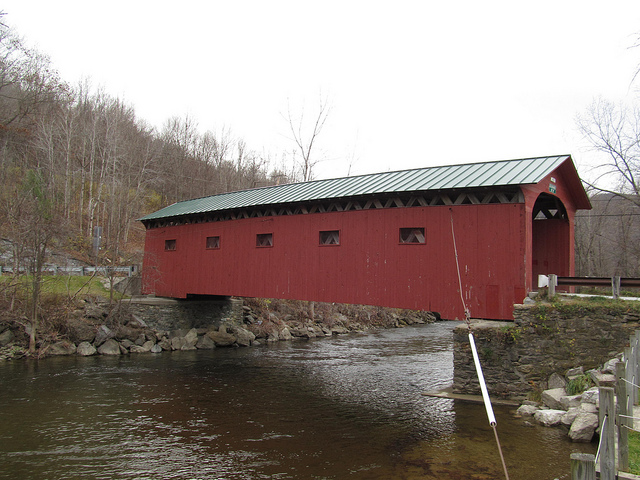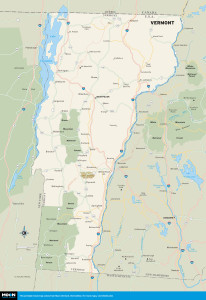
It’s easy to get up close to Bridge on the Green in Arlington. Photo © Doug Kerr, licensed Creative Commons Attribution Share-alike.

Vermont
Bridges in Vermont were covered to protect the roadway and supports from the ravages of New England weather. The covers were relatively easy to replace compared with the supports driven into the river bottoms. Originally, there were more than 600 covered bridges in Vermont; two-thirds of them were destroyed in the disastrous flood of 1927. Dozens more were simply not replaced when their covers became damaged or rotted.While Pennsylvania is the state with the largest number of surviving covered bridges, Vermont and New Hampshire have long fought over which of the states can lay claim to being the “covered bridge capital of New England.” Actually, Vermont blows New Hampshire out of the water, with 106 surviving covered bridges compared to the Granite State’s 54. If it’s any consolation, however, New Hampshire can lay claim to having the longest covered bridge, the 450-foot Cornish-Windsor Bridge over the Connecticut River. (That’s the Windsor-Cornish Bridge to Vermonters.) Because the official boundary between the states is the west bank of the river, nearly the entire bridge is firmly within New Hampshire state territory.
Excerpted from the Third Edition of Moon Vermont.